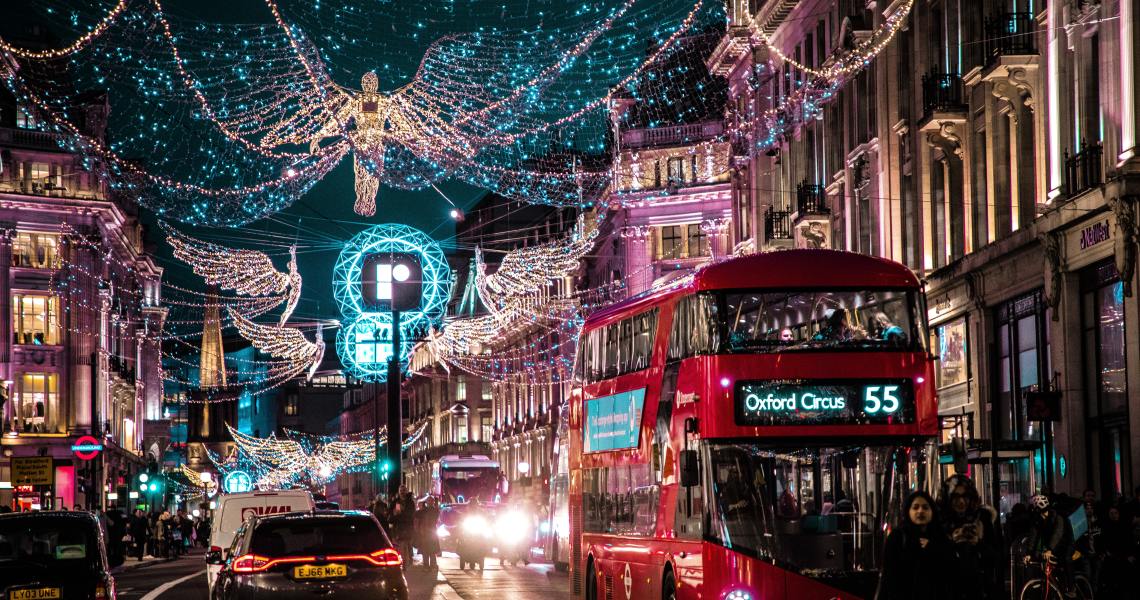For U.K. fashion brands, strong holiday sales were dependent on timely price points, careful planning and a meaningful physical retail presence.
In its December sales report, published January 10, the British Retail Consortium (BRC) said total sales for the month picked up 6.9% year over year. But although people spent more, they bought less, with the sales boost owed to a high inflation rate. U.K. prices in December were 10.6% higher, compared to the same time period last year. For all of 2022, U.K. retail sales increased 3.1%, while the annual inflation rate averaged out to more than 10%.
For some retailers, the changes to purchase patterns meant that the crucial middle market was missing from their monthly sales results for the biggest shopping period of the year.
“Our biggest challenge was the squeeze of our middle market because of the socio-economic outlook,” said Rebecca Morter, founder and CEO of designer concept store Lone Design Club, which has two stores in London. “Our average order value was quite skewed. We had a higher AOV from a lot of international tourists and affluent locals, but we saw that our core middle market — with basket sizes of $250-$350 — was dropping and being squeezed, moving to our lower price bracket or aspirational shopper prices.”
Lone Design Club sells many independent brands that are focused sustainability but out of reach for budget-conscious shoppers, Morter said.
“The challenge is it’s such a turbulent period where people are struggling to predict what is going to happen, and because of that, you’ve got erratic behavior from customers,” she said.
Changes in customer behavior worked to the advantage of many retailers with physical channels.
Ad position: web_incontent_pos1
“Stores are back with a vengeance, but online underperformed [during the holidays], with both pure play retailers and the e-commerce arms of many retailers delivering disappointing results,” said Siobhan Gehin, retail expert and senior partner at management consultancy Roland Berger. “[Local] issues with the Royal Mail and Christmas deliveries no doubt played a role here. Meanwhile, even on Boxing Day, high street footfall was up 44% up over last year, with shopping center sales up 40%.”
And brands that have built on their in-store experience came out as winners. “Interestingly, our physical sales outperformed digital; we saw a larger gap [than in prior years] between physical and digital sales, with people wanting to get out and engage,” said Morter. For December, LDC opened a holiday pop-up through a partnership with the estate managers Crown Estate. It hosted DJ sets and designer meet-and-greets, among other activations. “Many of our highest spenders would rather have a physical experience.”
London experienced strikes by a number of crucial logistics and transport services, including rail and Post Office worker strikes, throughout December. For luxury shoe brand Malone Souliers, early planning on the part of its logistics team was key to avoiding delays. “We were fortunate to be able to overcome some logistics issues before Christmas, allowing us to meet all of our delivery deadlines,” said Stella Antoine, COO of Malone Souliers. “We try our best to monitor and manage our supply chain. At busy times, such as during the holiday season, with the huge courier backlog, it can be particularly tricky.”
The brand’s sales also benefitted from a well-timed product collaboration with Netflix series “Emily in Paris,” which launched in December 5 and runs until late January.
But, Gehin said, U.K. retailers shouldn’t expect holiday spending in stores to hold up this year. “It would not be surprising to see consumers’ savings ‘cushion’ afforded by the pandemic more or less depleted,” she said. “Strong demand forecasting and planning are now more critical than ever for addressing excess inventory and reducing markdowns. At the same time, retailers and brands should consider value creation opportunities to reduce operating costs and inventory.”


